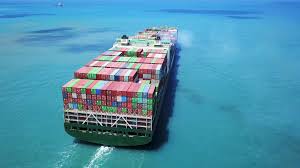Pandemic and Global Disruption Insurance: A Comprehensive Guide for Manufacturing Supply Chains
Introduction: The New Landscape of Global Manufacturing Risk
The COVID-19 pandemic exposed unprecedented vulnerabilities in global manufacturing supply chains, revealing that traditional risk management strategies are no longer sufficient. In an increasingly interconnected world, manufacturers face complex, multifaceted risks that can emerge rapidly and disrupt entire production ecosystems.
This comprehensive guide explores pandemic and global disruption insurance—a critical tool for manufacturers seeking to protect their operations, revenue, and long-term sustainability in an era of unprecedented global uncertainty.
Understanding Supply Chain Disruption Risks
Pandemic-Induced Vulnerabilities
- Global workforce shortages
- International logistics and transportation constraints
- Raw material procurement challenges
- Sudden demand fluctuations
- Geopolitical tensions and trade restrictions
Key Risk Categories
- Operational Disruption: Complete or partial shutdown of manufacturing facilities
- Supply Chain Interruption: Inability to source critical components or materials
- Financial Loss: Revenue decline, increased operational costs, contractual penalties
- Reputational Damage: Loss of customer trust and market position
Pandemic and Global Disruption Insurance: A Comprehensive Solution
Unlike traditional business interruption insurance, pandemic and global disruption insurance offers a more nuanced, comprehensive approach to protecting manufacturing supply chains.
Core Coverage Components
Business Interruption
Covers lost income and fixed expenses during forced operational shutdowns, including pandemic-related closures.
Supply Chain Protection
Compensates for losses arising from disrupted supplier networks, including alternative sourcing costs.
Contingent Business Interruption
Protects against losses from disruptions at critical suppliers or customers, even if your facility remains operational.
Workforce Replacement
Covers additional costs of temporary staffing, training, and recruitment during workforce shortages.
Strategic Risk Mitigation Beyond Insurance
Proactive Supply Chain Resilience Strategies
- Diversified Supplier Networks: Reduce dependency on single-source suppliers
- Digital Supply Chain Mapping: Implement real-time tracking and predictive analytics
- Flexible Manufacturing Capabilities: Develop adaptable production models
- Inventory Buffer Strategies: Maintain strategic component reserves
- Cross-Training Workforce: Create operational flexibility
Selecting the Right Pandemic and Global Disruption Insurance
Key Considerations
- Comprehensive Risk Assessment
- Customized Coverage Limits
- Rapid Claims Processing
- Global Coverage Scope
- Pandemic-Specific Clauses
Recommended Policy Features
- Extended Business Interruption Coverage
- Communicable Disease Endorsements
- Supply Chain Contingency Funds
- Crisis Management Support
- Reputation Restoration Services
Real-World Case Studies
Automotive Components Manufacturer
A mid-sized automotive parts manufacturer leveraged pandemic insurance to recover £2.5M in losses during the COVID-19 pandemic, maintaining operational continuity and protecting 250 jobs.
Electronics Supply Chain Resilience
A global electronics firm used comprehensive disruption insurance to quickly pivot production, mitigating semiconductor shortage impacts and maintaining 80% of projected revenue.
The Future of Manufacturing Risk Management
As global uncertainties continue to evolve, pandemic and global disruption insurance will become an essential strategic tool for manufacturers. Emerging technologies like AI-driven risk prediction and blockchain-enabled supply chain transparency will further enhance insurance models.
Conclusion: Proactive Protection in an Uncertain World
Pandemic and global disruption insurance represents more than a financial safety net—it's a strategic investment in organizational resilience. By understanding risks, implementing comprehensive coverage, and adopting proactive mitigation strategies, manufacturers can transform potential vulnerabilities into competitive advantages.
Frequently Asked Questions
How quickly can pandemic insurance respond to a disruption?
Modern policies often include rapid response mechanisms, with some insurers providing initial funds within 72 hours of a validated claim.
Are pandemics always covered?
Coverage varies. Post-COVID policies are more explicit about communicable disease and pandemic scenarios. Always review policy details carefully.
How expensive is pandemic insurance?
Costs depend on industry, company size, global exposure, and specific risk profile. Prices have become more competitive as insurers develop sophisticated risk models.


 0330 127 2333
0330 127 2333
